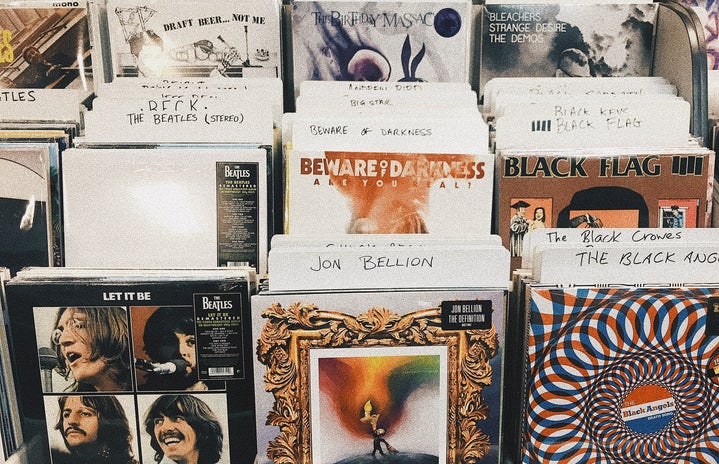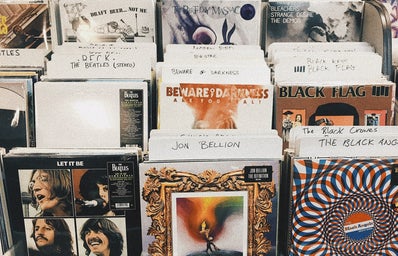Today’s boy bands are famous for not just their music but their allure. Their personalities, clothes, and images are an essential part of band and fan culture. Fans are fascinated by what happens behind the scenes, what their image is, and are excited to keep up with new media releases.
This excitement is reminiscent of the most influential boy band of all time: The Beatles, who gained popularity in the 1960s with the Beatlemania phenomenon. The Beatlemania audience has been said to have been primarily young screaming girls, or the original fangirls. Today, a fangirl is described by Merriam-Webster as “a girl or woman who is an extremely or overly enthusiastic fan of someone or something.”
WHat is Beatlemania?
The Beatles — John, Paul, and Ringo — were one of the first rock bands to have millions of youth enraptured by their style and charisma. Beatlemania, or as the Museum of Youth Culture describes: “the name given to describe the ecstatic, female-led fan culture surrounding the Beatles between 1963 and 1966,” hit the world like a storm. Beatlemania is said to have been a fad that featured many “crazy” teenage girls who hollered and assembled in groups to share their out-of-reach connection with the band.
It was an exciting time because rock and roll was still developing, and The Beatles were the newest thing in the early 1960s. They had matching bowl cuts, matching suits, and big smiles when they performed. Their music was light and inspired by soulful rhythm and blues ballads.
When they made their US debut in 1964, tons of fans swarmed to catch a glimpse of them, even in passing. They performed at the Ed Sullivan Show (which was one of the most popular TV shows at the time), and you could see the excitement and joy on the faces of the girls in the audience.
It was the entire experience of seeing them that they enjoyed; their popularity was not solely reliant on their music but also on their personalities and charm. Their cheeky interactions with interviewers and fans were relatable to teenagers and beyond. Beatlemania was so expansive that it started a cultural conversation about who these boys were, and many continued to join in and learn about what made these boys so special.
Why Did They Blow Up?
To understand the craze, one must consider the Beatles’ relatability. When the band released their first album, Please Please Me, they were all around 20 years old. They were young, attractive, and had a distinct music genre that was yet to be explored. They sang about heartbreak, longing, and love, which the average teenage girl could very easily picture.
The Beatles were just boys from Liverpool, England, who started out their careers playing in underground venues. Young audiences were excited about their relatability, and they could relate to their songs about relationships. These themes are very similar to those of fanbases today, which feel close to the artists they love through the music and media they release.
On a different note of reliability, one of their most famous later songs, “Blackbird” is a testament to the sense of hope that the Civil Rights Movement of the 60s brought to young people. A fan of Paul McCartney, Margo Stevens said that she and some other girls waited outside his house in London in the 60s, and Paul, “sat on the windowsill with his acoustic guitar and sang ‘Blackbird’ to us, standing down there in the dark.” The Beatles made connections with their audience, and they enjoyed that people wanted to listen.
When reflecting on writing “Blackbird”, Paul said for Udiscovermusic, “I remembered this whole idea of ‘you were only waiting for this moment to arise’ was about, you know, the black people’s struggle in the southern states, and I was using the symbolism of a blackbird. It’s not really about a blackbird whose wings are broken, you know. It’s a bit more symbolic!” This song continues to be a symbol of black power and freedom, with artists like Beyonce bringing new life to the work. You can hear Beyonce’s cover of “Blackbird” in her new country album, “Cowboy Carter,” where she embraces her Southern roots.
The Counter-Culture Movement
An aspect of The Beatles that audiences were drawn to in the 1960s was their influence on the counter-culture movement. Brittanica says the counter-culture movement “was an alternative approach to life that manifested itself in a variety of activities, lifestyles, and artistic expressions.” Throughout the 1960s, the Beatles expanded their music topics to include nuanced political statements, complex narratives, and psychedelic experiences.
Counter-culture was about rebellion and changing the way you lived and thought. Through the Beatle’s experimentation with sound and expression, they kept their audience engaged and wanting more.
So, although the fangirls of Beatlemania have been undermined and criticized throughout the years, there is respectable history that underscores why they were so passionate about what The Beatles sang about. These girls were at the forefront of seeing the possibilities of what rock and roll as a genre could be. They supported a new way of receiving and interacting with music that was unheard of in previous decades.
The Beatles and Their Fans
The Beatles made many albums within the 7 years they were together, many of which have become household favorites around the world. Not all fans knew the members personally, and as always, not all fans knew boundaries. But sharing a respectable love for a band is not something to be ashamed of.
Fangirl culture is something to be embraced as the observer describes: “The culture of being a fan allows for community building and an outlet to express our identities in fun, lighthearted ways.” If not for The Beatles, we may not have the inclusive music culture that we have today.
Many of your famous artists probably grew up listening to The Beatles and cite them as an influence. They too, write for their worldwide audiences that support them like The Beatles did. So, next time you think about your favorite bands and your favorite band members, I encourage you to think kindly about the girls in the 60s who loved arts, culture, and music just as much as you.





